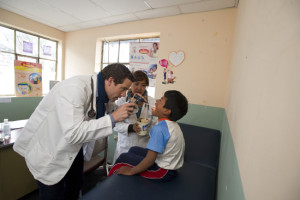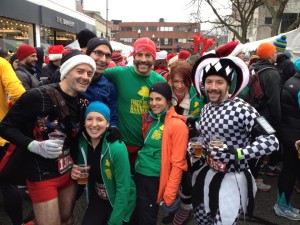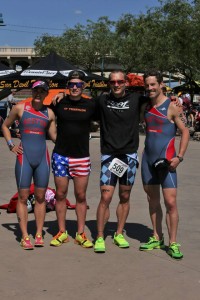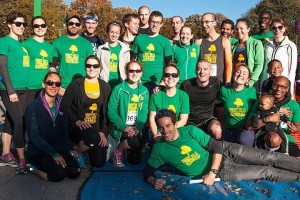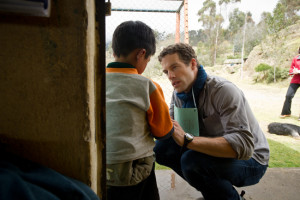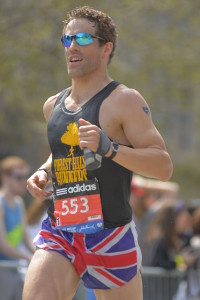Day in the Life: MD/MPH Student + FHR Founder + Ironman
I’m excited to feature Owen Kendall as my guest blogger today. Owen is the founder of the Forest Hill Runners Club in Jamaica Plain, a MD/MPH student at Boston University, a Lululemon ambassador for the Chestnut Hill store and is also an ironman athlete. Learn not only what it’s like to be live in the shoes (or sneakers) or Owen for the day but what it means to train and eat right. There are some really great tips here. You’ll be inspired!
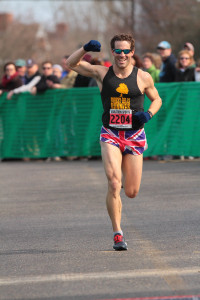
And here’s Owen!
Cara and I first connected a little over a year ago – when we both became ambassadors at lululemon Chestnut Hill. I thought…all right…she’s smart and has pretty great energy, but what is she like as a spin instructor and yoga teacher? I got the answer soon after at lululemon Chestnut Hill’s grand opening event. With a string quartet backing her, she led a room of over 100 through one of the strongest, most connected class I’d ever been to. This year, when Forest Hills Runners (FHR), the free community running group I founded in JP, was helping to organize a yoga for runners class at JP Centre Yoga, we heard that Cara might be an option to teach the class. Perfect, I thought. It was exactly what we needed. It’s been nice to see her at JP Centre Yoga every week, where her teaching and her good vibes light up those around her.
As a MD/MPH student heading into the 5th year of a 5 year program at Boston University, no day is “normal.” Some days I’m writing papers, other days I’m organizing research, some days I’m in the hospital for 12-14 hours a day, and other days I’m just hanging out and enjoying life. The only constant through medical school and the school of public health has been my love of running, biking, swimming, and community, which led me to create the free community running group, Forest Hill Runners (FHR), which meets at the Stonybrook T-stop in Jamaica Plain six times every week. A lot of people say that life has to end when you’re in med school – that all you have time for is studying. That’s not what I’ve found. In fact, I’ve found that a healthy balance between what I do in medical school and the school of public health and what I do in the community has helped me to stay positive, remain open-minded, and (hopefully) improve more people’s lives.
The things that excite me most day-to-day are FHR, training for triathlons (I race for Team Zoot NE and the Boston University Triathlon Team), learning about medicine and how to help people take better care of themselves on a daily basis, and thinking about how to help the most people possible live healthy, rewarding, connected lives (those last two ideas might seem like the same thing, but they’re actually quite different – the first covers medicine and the second prevention).
In terms of FHR, that means coordinating volunteers on a daily and weekly basis, leading at least one run every week and helping out at other runs as needed, planning town hall meetings to get everyone together to make improvements and implement new programs, connecting with local community organizations and health centers (including the police…who we have to remind that, even though we’re running really fast, we haven’t stolen anything), doing literature reviews on obesity prevention and community development programs, and organizing future research that will support the group in getting public or private funding that will help us expand to support more people in connecting with their neighbors through active living.
My triathlon training is pretty intense because…that’s how I roll. Plus, I’ve gone from training for sprint and olympic distance races to training for Ironman races. There are so many people who have run marathons nowadays that I’m sure many of you have experienced what it’s like to train for a marathon. Back when I was training exclusively for marathons, I’d run 10+ hours a week. That’s a lot of running and led to lots of calories burned. Training for an Ironman makes that look pretty easy. Where I used to run 16-22 miles every weekend for marathon training, now I’m biking 100+ miles, running 8-10 miles off the bike, and then running 16-22 miles the next day, before or after which I go for a light swim. During the week I tend to bike 200+ miles, run another 40 miles, and swim 10,000—12,000 yards. This has led to some pretty big improvements in my fitness and requires that I sometimes eat up to 10,000 calories in a day…something I’ll get to in a minute when I address nutrition.
Another thing that really excites me (to be honest, I’m a really excited person, so I’m engaged with a lot of different things) is running form. I teach a once-monthly running form clinic at JP Centre Yoga on the first Sunday of every month (for free) and also teach free running form clinics to FHR members (and anyone else who would like to come) before certain Saturday runs with FHR (join FHR on Facebook to stay updated and to learn about upcoming form clinics). You can also connect me directly to get running form advice by going to my website and connecting me from there> www.owentmkendall.com
I’ll give you two variations on a day in the life so that you can see what my days look like when I have lots of time and what my days look like when I have less time. Before I do anything, I have to say that FHR, which began with only 2 members (myself and the other founder) and has now connected more than 550 people, wouldn’t exist if it weren’t for the community that has developed around it. FHR is completely volunteer-led, from my role as coordinator, Thursday run-leader and coach, to our amazing gear coordinators, race coordinators, yoga-for-runners coordinators, volunteer team who helped me to put on the Franklin Park Mile last year and is helping me with the event again this year, social coordinators who help organize dinners, pub-crawls, celebrations, and field days, and so many other volunteers I would love to tell you about, but…yeah…we’ll stop now. I may have had the impetus to get things going, but others have done as much or more than I have to continue to support community development through physical activity. It’s incredible to see community development through running inspire people, though it makes complete sense to me since running and community are two of the most critical things that led us to evolve into the species we are today.
A tough day in the life:
4:30 am wakeup –3 open-face peanut butter and jelly sandwiches and some coffee for breakfast. I am starving when I wake up. Read an article in The New Yorker (I’m addicted).
5:15 am bike ride – home at 7:15 am- I head out to meet the Crack o’Dawn riders out at Cutler Park, where they meet at 5:45 for a fast 20+ mile ride through Dover, Sherborn, and Needham. (32 mile ride total)
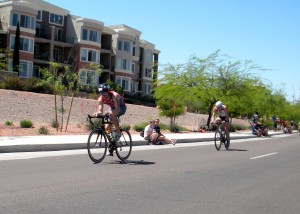
7:45 – 8:00 am off to clinic – I ride my fixed-gear bike (codename: goldilocks due to her yellow handlebars) everywhere I go because it’s fast and fun and keeps me strong…while smiling.
At the clinic, either at Boston Medical Center or at one of the community health centers in Boston, I see patients, present findings to doctors, go back in and see patients again with the doctor, make kids laugh, coerce patients into smiling more, try to get people to convince themselves to take better care of themselves so they can get off their meds. Learn huge amounts and apply knowledge from first and second year of medical school. Snack between seeing patients.
12:00 pm – lunchtime- Eat an obscene amount of food (see nutrition*)
1 pm – Return to clinic- See earlier report on clinic activities. Snack between seeing patients.
5 or 6 pm – Head home- Bike home. Change into running gear.
7 pm – Run with Forest Hills Runners (FHR)- FHR meets for 6 runs every week and we always meet at the Stonybrook T-stop. Our main runs are at 7 pm, Monday through Thursday, with extra runs on Monday morning at 6 am and the best coffee run ever at 9 am on Saturday (you can go out and celebrate Friday night and still get a group run in Saturday morning to sweat it all out! …just remember to hydrate).
I lead the Thursday evening run but try to make it to as many runs as I can every week. Unfortunately, with training for triathlons the way I am and with everything else in my life, I tend to only make runs on Tuesdays and Thursdays.
Tuesdays are a tempo workouts, which means you warm up for 10 minutes and then run half-marathon pace (a pace you could run for no more than 1 hour as hard as you can – comfortably uncomfortable) for 25-35 minutes. These, as all other FHR runs do, meet at Stonybrook and then head to different locations in JP where different tempo runs are done (sometimes on ~1 km loops, sometimes on ~1 mile loops, and other times on ~1.5 mile loops).
Thursday is track night. We all meet at Stonybrook, as always, and then head over to the Brookline Track at Downes Field. It’s about a mile away from Stonybrook, which is a perfect warmup. We then do some active stretching (you should never do static stretching before running since your muscles work like springs in running and stretching them takes away their springiness, leading to higher injury rates – check out my website to see links to relevant papers), some drills (A skips, B skips, butt kicks, and high knees), and finally some striders (these are 70-100 meter accelerators that start at about 40% and end at about 90% speed to get you sweating).
Here are some of my favorite workouts (if you don’t know track workouts, one lap of an outdoor track is 400 meters, meaning that one mile is 4 laps of a track or approximately 1600 meters):
– Ladder workout (400, 800, 1200, 1600, 1200, 800, 400) at 5k pace with 2:00 recovery
– 8 x 800 at 5k pace with 2:30 recovery
– 8 x 600 at 5k pace with 2:00 recovery
– 4 x 1 mile at 10k pace with 1:30 recovery
– Taper workout (6 x 400 at 5k pace with 400 jog recovery followed by 3 x 200 fast with 200 recovery)
After every workout, we cool down and stretch.
STRETCHING AFTER RUNNING IS JUST AS IMPORTANT AS THE RUNNING!
8:30 pm – post-workout dinner and drinks with FHR- FHR doesn’t always go out for drinks and food after workouts, but when we do it’s always a great time. I love the community that’s formed and am always excited to interact with people I’d never have the chance to meet otherwise. It’s invigorating to see the group continue to grow and develop with time.
9:30 – 10:00 pm – Home to sort myself out, read or study- I normally read or study or hang out with my fiancéuntil around 11:30, at which point I crash…hopefully near my pillow.
An easy day in the life:
Some days this past year I only had classes, which were often in the afternoon. This meant I was able to do a lot of training in the mornings. When this happened, this is how my day looked.
6:00 am – wakeup- 3 open-face peanut butter and jelly sandwiches and some coffee for breakfast. I am starving when I wake up and always eat even right before working out.
6:30 am – Head out the door for a swim- I normally swim 3000-4000+ yards at the pool – either at BU’s fitrec or at Boston Sports Clubs, after which I eat a protein bar and a Lara bar to keep my energy high, and then return home or head wherever I’m going. If I can eat a full meal after a swim, that’s ideal, but sometimes time does not permit that.
8 am – Return home and prep my bike
8:15 am – 60-70 mile ride- I head out to the same area I ride with the Crack o’Dawn riders and do several loops through the area along South Street, Main Street, Glen Street, Farm Road, Pine Street, and Route 16. This is normally one of the hardest rides of the week since it’s actually at pace. I go between pushing 24-25 mph and cruising at 19-20 mph to work on leg strength and endurance to prep for half-ironman and ironman races.
11:30 am – return home and stretch- After grabbing a protein bar and some water (I always eat within 30 minutes of finishing a workout and try to take in a lot of water, as well), I stretch for between 15 and 30 minutes after every workout, during which I either watch running, triathlon, or bike racing on youtube or read an article. I’m not just writing this because it’s Cara’s blog. Stretching really is the most important thing you can do to prevent injuries, improve your performance, get faster, and feel better on a daily basis.
12 pm – Lunch and clean myself up I eat an obscene amount of food (see nutrition*).
1 pm – Study, read, finish assignments, etc. I do some learning here…
2:00 – 5 pm – Class- My favorite class this last semester was health policy, where I learned a few things I’d love to share. First, the US spends twice as much as any other country in the world on healthcare. We also have nearly the worst health outcomes of any developed country on earth. This is predominantly due to the inequity in the care we deliver to patients based on race, class, gender, sexual identity, and geographic location. The actual amount spent on healthcare was $3.1 trillion in 2013. 75% of that money was spent caring for individuals with chronic diseases (depression, obesity, diabetes, heart disease) – 95% of which are preventable through diet, exercise, appropriate stress levels, and strong community support. The most important thing we can do as a country is figure out how to create greater equity within society, which would lead to lower levels of chronic stress in all populations and greater access to education and healthcare for all individuals no matter their race or social background. With greater equity within society, interaction between populations would also increase, supporting stronger and healthier communities. Public health programs are important, but without powerful infrastructure changes in society at large, they have little chance of making a big impact overall.
6 pm – Easy run- I normally run 5-8 miles on an easy day, which takes between 32 and 52 minutes. Then I stretch and roll out using a foam roller, eat a lot of food, and drink tons of water
7 pm – Hang out with my lady and read until around 10:30 or so…This right here is the highlight of the day.
Nutrition:
We have all sorts of ideas about nutrition in our society and none of our ideas have been proven 100% correct. Some research (done poorly) has shown that people have sensitivities to gluten. Other research (also done poorly) has shown that people are not sensitive to gluten. Some research has shown the certain foods are inflammatory. Other research has shown that meat is good for you. Some has shown it’s not. I think we all have to find out what works for us, while keeping in mind the biochemistry of how our bodies deal with nutrients – how it breaks things down and how those breakdown products affect us.
For me, I’ve found that the best thing I can do for my body is avoid meat, dairy, and gluten. I avoid gluten because I broke my sacrum a little over two years ago because of low bone density that was caused by extremely low vitamin D levels. Apparently, I was having malabsorption issues in my small intestine (likely due to celiac disease), which improved after cutting gluten from my diet.
The things I eat a lot of are the following:
– Coffee with almond milk
– Gluten free bread with peanut butter and jelly
– Humus
– Fruits and vegetables (broccoli, squash, mushrooms, tomatoes, onions, garlic, kale, bell peppers, celery, etc)
– Bananas (I have at least one banana smoothie per day with 8-10 bananas, water, a small amount of almond milk, and cinnamon in it…and sometimes two smoothies per day, adding up to 16 bananas total, which has really helped with digestion and keeps me nice and lean)
– Eggs (5-8 eggs when I have them with meals)
– Ethiopian food
– Burrito bowls (can’t eat burritos anymore…sad!)
– Kind bars
– Lara bars
– NuGo bars
The only rule I have is that I should be full: I don’t worry about calories; I don’t worry about whether there’s a lot of fat in what I eat (there isn’t, except in peanut butter, because of what I’ve chosen to exclude – meat and dairy); I worry about keeping hydrated, eating enough so that I’m not feeling woozy or hungry, and getting a lot of fiber in my diet.
That’s it. Real simple. Is it the greatest diet ever? Probably not. But it works and it keeps me happy and keeps me going. The only time I don’t feel well is when I don’t follow my rules of exclusion. If I have a lot of meat, I feel like crap for a few days. Same thing with dairy. And when I eat gluten (even if it’s just a little by accident) I end up going back to having severe stomach problems for about a week.
In conclusion, I really appreciate Cara asking me for this day in the life. It turns out, now that I look back on it, that I exercise a lot and read a lot. I swear…I do other things, too…but these are some pretty average days for me nevertheless. I love triathlons, I love community running with FHR, I obsess over running form and how to keep people running healthy and pain-free, and I’m ecstatic that I’m nearly a doctor who will be able to help people take better care of themselves. Primary care is going to be a blast and I think that having a balanced, healthy life is going to make me a better physician for my patients into the future.
